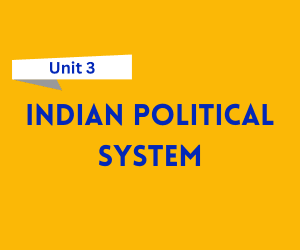Understanding the structure and functioning of the Indian economy is vital for business students. This unit focuses on how different sectors contribute to India’s economic development, recent trends in economic indicators, and the challenges of poverty, inequality, and unemployment.

Download Unit 3 – Indian Economy Overview Notes
Get simplified revision notes for this unit:
⬇️
Download Unit 3 Notes PDF
Structure and Features of Indian Economy
India has a mixed economy, which combines features of both capitalism and socialism. It is characterized by co-existence of public and private sectors, government regulation, and focus on inclusive development. The Indian economy is also developing and diverse, with agriculture, industry, and services playing unique roles.
India’s economy is vast and complex, with urban and rural sectors co-existing. The country has made significant progress since independence, moving from an agrarian economy to one led by services and industry. Despite challenges, India remains one of the fastest-growing economies in the world.
Role of Agriculture, Industry, and Services Sector
Agriculture Sector:
Agriculture has traditionally been the backbone of the Indian economy, employing a significant portion of the population, especially in rural areas. It provides raw materials for industries and ensures food security. Despite modernization, issues like fragmented landholding, dependence on monsoons, and low productivity persist.
Industry Sector:
The industrial sector includes manufacturing, mining, and construction. It plays a crucial role in creating jobs, increasing exports, and contributing to national income. Industrial development has been promoted through schemes like “Make in India” and incentives for MSMEs (Micro, Small, and Medium Enterprises).
Services Sector:
The services sector is the largest contributor to India’s GDP. It includes IT, telecom, banking, education, and health services. With the rise of digital technology, India has become a major global hub for IT and software services. This sector has fueled urbanization and skilled employment.
Trends in GDP Growth, Employment, and Income Distribution
India’s GDP growth has seen ups and downs, influenced by global trends, domestic policies, and reforms. Post-1991 reforms triggered high growth, especially in the 2000s. However, challenges like inflation, fiscal deficits, and external shocks (e.g., COVID-19 pandemic) have affected growth.
Employment trends have shifted from agriculture to services, but unemployment and underemployment remain major issues. The informal sector still employs a large share of the workforce.
Income distribution in India is unequal. While some regions and communities prosper, others lag behind. This inequality impacts consumption patterns and access to resources, and it often leads to social and political tensions.
Poverty, Inequality, and Unemployment – Causes and Government Initiatives
Causes:
- Population growth and limited job opportunities
- Low productivity in agriculture and informal sectors
- Unequal access to education, healthcare, and capital
- Regional disparities and lack of infrastructure
Government Initiatives:
To address these problems, the government has launched various schemes:
- MGNREGA: Provides 100 days of guaranteed rural employment
- National Skill Development Mission: Improves employability
- Pradhan Mantri Jan Dhan Yojana: Promotes financial inclusion
- Startup India & Standup India: Encourages entrepreneurship
- Public Distribution System (PDS) and subsidized housing for the poor
These initiatives aim to reduce poverty, bridge inequality, and create more jobs. However, effective implementation and awareness remain critical challenges.
